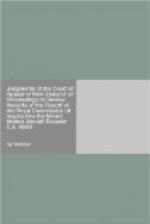The term ‘whiteout’ has more than one meaning as being descriptive of weather conditions in snow-covered terrain. For aviation purposes it is often described as the cause of the visual difficulty which occurs when a aircraft is attempting to land during a snowstorm. As already stated, the United States Navy maintains a special whiteout landing area situated to the south of its normal landing strips near McMurdo Station. This area is used when an aircraft, which is committed to a landing, is required to land when visibility is obscured by a snowstorm. The snow in Antarctica is perfectly dry, and a wind of only 20 kilometres can sweep loose snow off the surface and fill the air with these fine white particles. A landing on the special whiteout landing field can be accomplished only by an aircraft equipped with skis or, in the case of an aircraft without skis, then it must make a belly-up landing on this snow-covered emergency airfield. Flying in a ‘whiteout’ of that description is no different from flying in thick cloud. The pilot cannot know where he is and must land in accordance with strict radio and radar directions. So far as I understand the evidence, I do not believe that either the airline or Civil Aviation Division ever understood the term ‘whiteout’ to mean anything else than a snowstorm. I do not believe that they were ever aware, until they read the chief inspector’s report of the type of ‘whiteout’ which occurs in clear air, in calm conditions, and which creates this visual illusion which I have previously described and which is, without doubt, the most dangerous of all polar weather phenomena.
While largely agreed about the whiteout conditions, the Commissioner and the Chief Inspector took quite different views as to whether the crew had been uncertain of their position and visibility. This disagreement is associated with a major difference as to the interpretation of the tape recovered from the cockpit voice recorder covering the conversation on the flight deck during the 30 minutes before the crash.
Both the Commissioner and the Chief Inspector found difficulty in arriving at an opinion about what was said and by whom. Whereas the Chief Inspector thought that the two flight engineers had voiced mounting alarm at proceeding at a low level towards a cloud-covered area, the Commissioner thought that Captain Collins and First Officer Cassin had never expressed the slightest doubt as to where the aircraft was and that ‘not one word’ was ever addressed by either of the flight engineers to the pilots indicating any doubt. This is not a question on which the present proceedings call for any opinion from this Court, nor are we in any position to give one.




